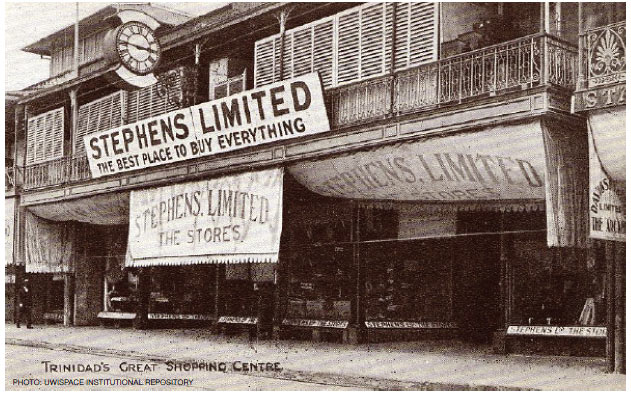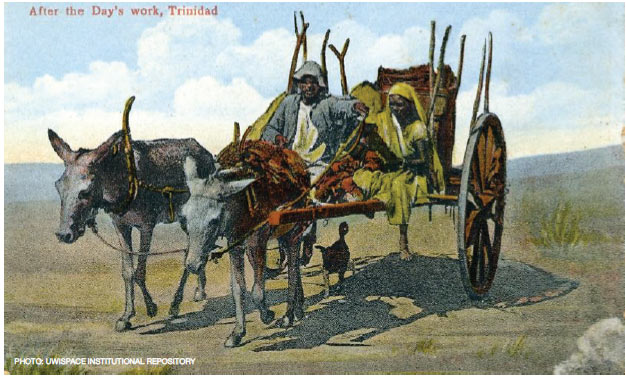 |
 |
 |
|
April 2014
|
It is the kind of thing you think about after talking to Frank Soodeen, the senior librarian at the Alma Jordan Library who manages the Digital Library Services Centre (DLSC). Traditionally, libraries have been physical repositories for information: books, magazines and so on. As the culture changed with the hunkering down of the Internet as a way of life, so too did access to information and the information seeking behaviour of library users. Fewer students and researchers physically come into libraries globally, but that does not mean that the collections have lost importance. Libraries have now found that the challenge is to provide a wider range of information resources through well managed online platforms in the networked landscape that is the Internet and the World Wide Web. At the St Augustine campus of The UWI, the DLSC creates and manages digital collections for access by the University’s community throughout the region and by researchers across the world. These resources are captured, organized and preserved to serve teaching, learning and research needs. Just so you know, the DLSC is primarily engaged in:
As an example, Soodeen recalls how dissertations were once compiled in threefold, with a fairly involved process to print, bind and then disseminate to each campus. “Now we ask them to bring it in electronically, on DVDs or CDs, and the Library takes responsibility for circulating the theses to other libraries and so on,” he says. “The issue of intellectual property rights is also taken into consideration,” he adds, noting that the “fluidity of the digital realm” makes managing the rights issue challenging at times. But, he says, building the Alma Jordan Library’s digitization capacity is based on the premise of open access. “We have this vision for creating open collections, but the success depends on the capacity of the institution to deploy technological and organisational frameworks that will help the libraries to capture digital content and organise that content in a meaningful way, so it can be more readily available.”
Soodeen is very concerned that the work done by regional scholars and academics should have their first home within the region. He believes that all work pertaining to the Caribbean should be available from The UWI’s library network. He laments the fact that too many universities outside the region have staked claims to this wide range of work cheaply and it has fed and enriched their research capacities without properly allowing the value of Caribbean research – as a corpus – to be given the respect it deserves. This is an underlying guideline for the basis on which the material to be first digitized will be selected. Broadly, analogue materials in all formats are to be digitized, including pictures, maps, ephemera, newspapers, journals, theses and dissertations, audio recordings, manuscripts, and videos. Material that is of historical and or cultural significance tops the selection list, which includes those items in high demand by researchers and students; items selected for publication or exhibition by the library; material that is outside the copyright domain or which permission to digitize has been obtained, and material that may otherwise have restricted access due to its conditions, value, vulnerability or location. Another benefit of digitization is preserving fragile and valuable material. Libraries often get collections in various states of repair, and while originals are restored as faithfully as possible, the digitization can help so that public access remains feasible. The digital collections are accessible via the UWISpace Institutional Repository that the libraries use as the platform for organizing and preserving digital content. Links to the collections are provided on the libraries' website and Online Public Access Catalogue (OPAC). By Vaneisa Baksh Useful Links
|


 How should libraries manage physical space in a world where information might soon be stored in the back of your eye and retrieval can be just a blink away?
How should libraries manage physical space in a world where information might soon be stored in the back of your eye and retrieval can be just a blink away? The plans ahead are ambitious indeed, but must be exciting – both from the point of view of the staff so eagerly pushing it and the library users who will be the big beneficiaries of this project. The overall goals are many, including digitizing and offering network access to unique collections of West Indiana materials from the University Libraries; preserving rare books and fragile collections while increasing access to them, and (Hallelujah!) establishing a regional and international reputation for developing premier digital libraries at The UWI.
The plans ahead are ambitious indeed, but must be exciting – both from the point of view of the staff so eagerly pushing it and the library users who will be the big beneficiaries of this project. The overall goals are many, including digitizing and offering network access to unique collections of West Indiana materials from the University Libraries; preserving rare books and fragile collections while increasing access to them, and (Hallelujah!) establishing a regional and international reputation for developing premier digital libraries at The UWI.